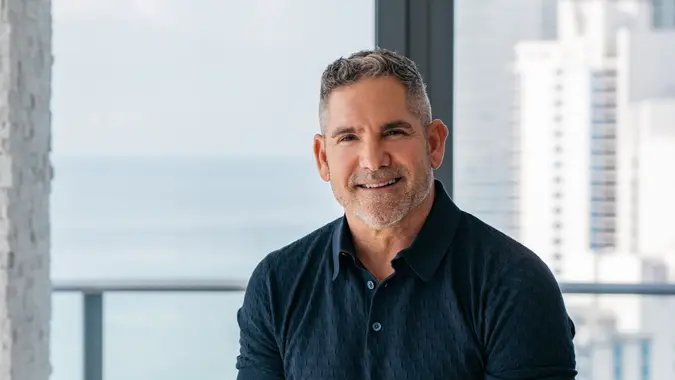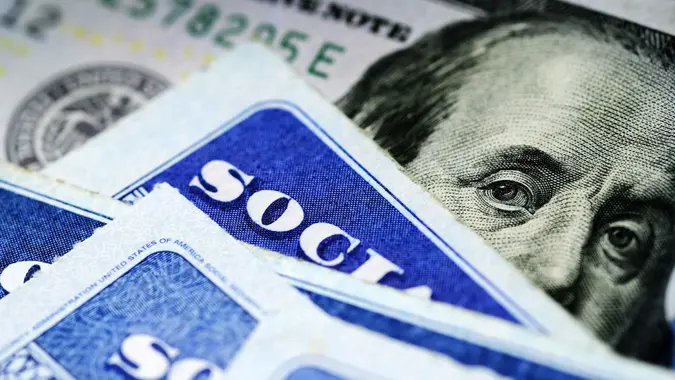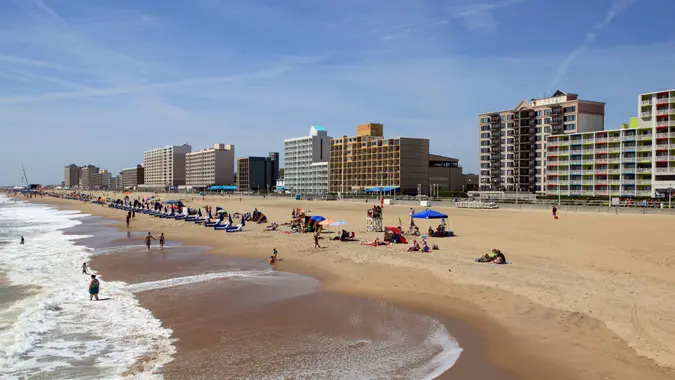How To Retire on $2K a Month: A Frugal Living Guide

Commitment to Our Readers
GOBankingRates' editorial team is committed to bringing you unbiased reviews and information. We use data-driven methodologies to evaluate financial products and services - our reviews and ratings are not influenced by advertisers. You can read more about our editorial guidelines and our products and services review methodology.

20 Years
Helping You Live Richer

Reviewed
by Experts

Trusted by
Millions of Readers
Retiring on a fixed income can seem daunting, but with some planning and commitment to a frugal lifestyle, it’s possible to retire comfortably on $2,000 a month. This takes discipline but ultimately will allow you to have more freedom and happiness in your golden years without money worries.
“Retiring on $2,000 per month is very possible,” said Gary Knode, president at Safe Harbor Financial. “In my practice, I’ve seen it work. The key is reducing expenses and eliminating any market risk that could impact your savings if there were a major market downturn.”
He continued, “Unnecessary expenses eat into your monthly income and can derail your retirement. It doesn’t matter if your monthly income is $2,000 or $20,000, too many unnecessary expenses are a major reason retirees have difficulty in retirement.”
Trimming unnecessary costs and establishing a safe, stable savings strategy are essential for making $2,000 per month work in retirement. Here are some guidelines for sticking to a $2,000 monthly budget.
Create a Budget
To commit to such a limited budget, you’ll need to monitor your spending closely. By tracking every expense in a budget, you’ll be able to identify your spending habits and places where costs can be reduced.
“A budget is super helpful,” Knode said. “Write it down on paper so you can see exactly how much you’re spending. It can be a bit surprising when you see it in black and white. Once you’ve written it down, start evaluating what needs to be cut and what can stay. You’ll be surprised how much you don’t miss some of those things!”
Getting your expenses down on paper or in a spreadsheet will make it easier to spot where cuts can be made. From there, you can adjust your spending to align with your $2,000 monthly budget.
About Market Risk
When living on a fixed income in retirement, it’s more important than ever to protect your retirement funds from potential market losses.
“You should think about ways to reduce your exposure to market risk with any money that is in an investment account of any kind — 401(k), IRA, TSP, brokerage account, etc.,” Knode said. “If the market has a major downturn and you lose money, it will be that much more of a strain on your retirement.”
If you’re living on a limited income, a market downturn could be devastating. Invest in funds that are less vulnerable to market fluctuations. When you have less exposure, you’ll be better able to weather any storms.
Housing and Utilities
Housing is likely your biggest expense, so downsize or relocate somewhere with a lower cost of living. Opt for a small space or rental apartment rather than homeownership. Shoot for $700 or less in rent/mortgage. Utilities should run you no more than $200 in a small space if you conserve energy.
Food and Groceries
Plan weekly menus, shop sales, buy generic brands and skip dining out. Price match, use coupons and shop at discount grocers. Meal prep to save money and reduce waste. Set a strict grocery budget. Try to keep your food costs around $300 monthly.
Transportation
Owning a car comes with hefty monthly expenses — auto insurance, fuel costs, maintenance and more. Give up your car entirely if you can. If not, limit your driving as much as possible. Use public transit when possible and utilize senior transportation discounts. Walk or bike for short trips. Consider relocating somewhere you can get by without a car. Budget no more than $200 for gas, maintenance and insurance.
Entertainment and Leisure
Recreation and leisure are important for health, but stick to inexpensive or free activities as much as possible. Museums, community events and public libraries are all great, free resources. Limit your paid subscriptions. One hundred dollars is plenty for incidentals.
Health and Personal Care
Prioritize health with Medicare, supplemental insurance and an emergency health savings account. Shop around for discounted prescriptions. Budget $150 monthly for healthcare essentials.
Shopping
Avoid shopping as entertainment. Make a list before entering stores and refrain from impulse purchases. Stick to thrift stores, used items and discount retailers when possible. Only use credit cards when you can pay them off immediately. Give yourself an incidental shopping budget of $50 or less.
Emergency Fund
Even the most frugal need savings for unexpected expenses. Build an emergency fund with three to six months of living expenses. With the budget above, you should be able to save a few hundred dollars each month toward this safety net.
More From GoBankingRates
 Written by
Written by  Edited by
Edited by 

























